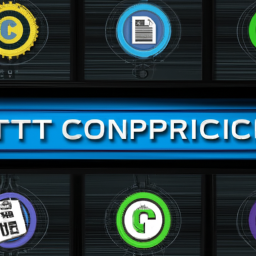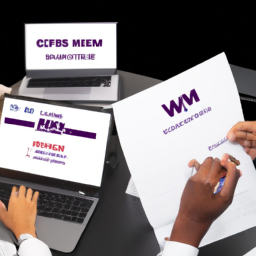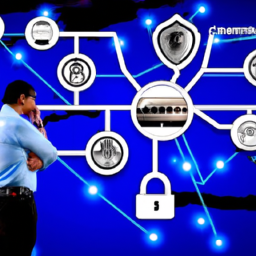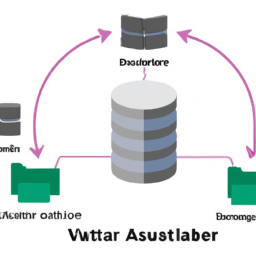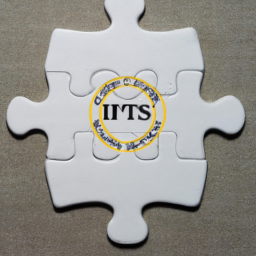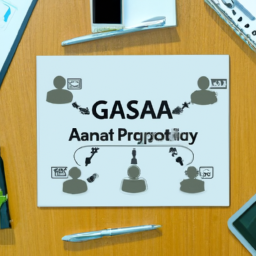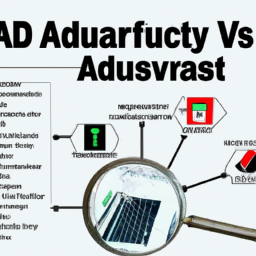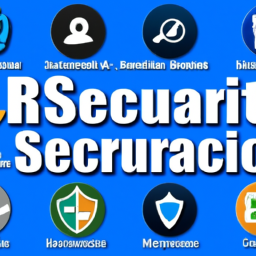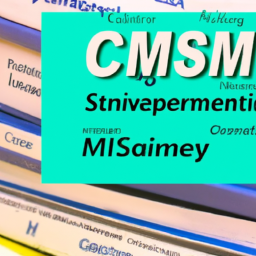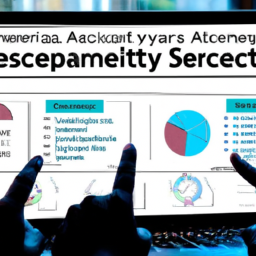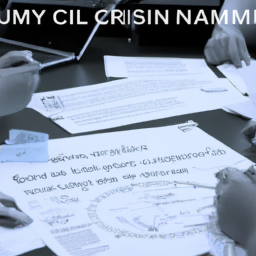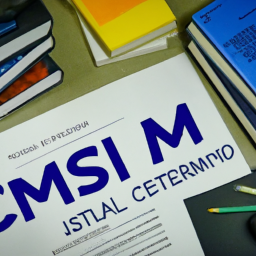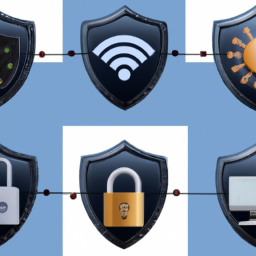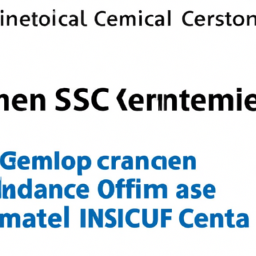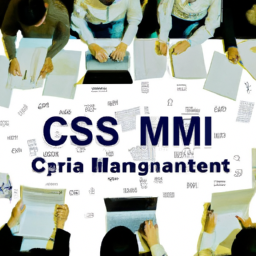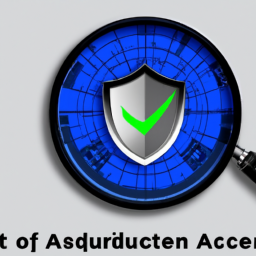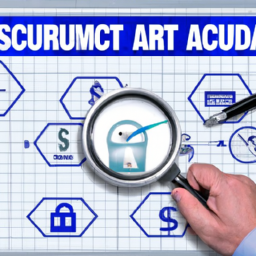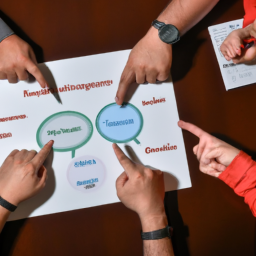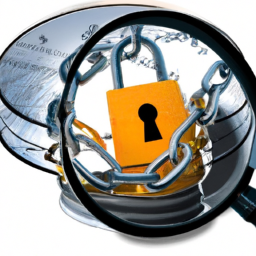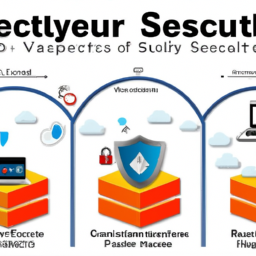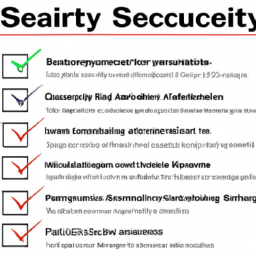Have you ever wondered what sets apart successful project managers from the rest? How do they consistently deliver projects on time, within budget, and exceeding expectations? The secret lies in achieving project management excellence through best practices and certifications.
In today’s competitive business landscape, project management has become a critical skill for professionals across industries. Whether you’re a seasoned project manager or just starting out in your career, mastering the fundamentals is essential.
But it’s not just about knowing the basics. To truly excel in project management, you need to develop effective communication and leadership skills. These are the qualities that separate the good from the great, enabling you to inspire and motivate your team to reach new heights of success.
Moreover, leveraging the right tools and software can significantly streamline your project management processes, ensuring efficiency and accuracy every step of the way. From project planning and scheduling to resource allocation and tracking, technology can be a game-changer in achieving project management excellence.
To mitigate potential risks and uncertainties, implementing robust risk management strategies is crucial. By identifying and addressing potential pitfalls early on, you can minimize the impact on your project’s success.
Lastly, obtaining relevant project management certifications demonstrates your commitment to continuous learning and professional development. These certifications not only enhance your skillset but also validate your expertise, giving you a competitive edge in the job market.
In this article, we will explore the best practices and certifications that can help you achieve project management excellence. So, whether you’re aiming to advance in your career or simply improve your project management skills, read on to discover the keys to success.
Key Takeaways
- Mastering project management fundamentals is essential for achieving project management excellence
- Utilizing the right tools and software can streamline project management processes and enhance communication and collaboration
- Effective communication and leadership skills are crucial for project management success
- Implementing robust risk management strategies is crucial to mitigate potential risks and increase the likelihood of project success
Understand Project Management Fundamentals
To excel in project management, it’s crucial to grasp the fundamentals and understand the core principles that drive successful project execution. By familiarizing yourself with project management principles and project management basics, you lay a strong foundation for effective project management.
Understanding the principles that govern project management helps you make informed decisions and navigate through the complexities of project execution. You will learn about project initiation, planning, execution, monitoring, and closure.
Additionally, understanding project management basics equips you with the necessary tools and techniques to manage scope, time, cost, quality, risk, and stakeholders. By mastering these fundamentals, you position yourself as a capable project manager who can successfully deliver projects on time, within budget, and to the satisfaction of stakeholders.
As you develop effective communication and leadership skills, you will be able to effectively collaborate and lead project teams towards project success.
Develop Effective Communication and Leadership Skills
Improve your communication and leadership skills to effectively convey ideas and inspire others. Developing conflict resolution skills is crucial in project management, as it allows you to address and resolve issues that may arise within your team. Effective conflict resolution fosters a positive work environment and ensures that everyone is working towards a common goal.
Additionally, improving team collaboration is essential for project success. By promoting open communication and encouraging teamwork, you can enhance productivity and creativity within your team. Utilizing tools such as project management software can further streamline communication and collaboration, providing a centralized platform for sharing information, assigning tasks, and tracking progress.
By enhancing your communication and leadership skills and utilizing project management tools, you can create an efficient and cohesive project management process that leads to successful project outcomes.
Utilize Project Management Tools and Software
By utilizing project management tools and software, you can efficiently streamline communication and collaboration within your team. This not only improves productivity but also ensures that everyone is on the same page and working towards the same goals. Here are four ways project management tools and software can benefit your team:
-
Centralized Communication: Project management software allows you to have a centralized platform where team members can communicate, share files, and track progress. This eliminates the need for numerous emails and ensures that all important information is easily accessible.
-
Task Management: With project management tools, you can assign tasks, set deadlines, and track progress. This helps in keeping everyone accountable and ensures that projects are completed on time.
-
Resource Allocation: Project management software helps you allocate resources effectively by providing visibility into team members’ availability and workload. This enables you to make informed decisions and prevent overloading or underutilizing resources.
-
Reporting and Analytics: Project management tools offer reporting and analytics features that provide insights on project performance, resource utilization, and overall team efficiency. This allows you to identify areas for improvement and make data-driven decisions.
By effectively utilizing project management tools and software, you can streamline your project management processes and set your team up for success. Now, let’s delve into how to implement risk management strategies to mitigate potential issues and ensure project success.
Implement Risk Management Strategies
In order to effectively implement risk management strategies, you need to first identify potential risks and develop mitigation plans.
By anticipating and planning for potential issues, you can minimize their impact on your project.
Additionally, it’s crucial to learn how to effectively manage and minimize project risks throughout the entire project lifecycle to ensure its success.
Identify potential risks and develop mitigation plans
Managing potential risks and developing effective mitigation plans is crucial for ensuring project success and avoiding costly setbacks. By utilizing various risk identification techniques, project managers can identify potential risks early on in the project lifecycle. This allows them to proactively address these risks and develop mitigation strategies to minimize their impact.
Risk identification techniques can include brainstorming sessions, historical data analysis, and expert judgment. Once potential risks have been identified, project managers can then develop mitigation plans that outline specific actions to be taken in the event that these risks occur. These plans may include contingency plans, alternative strategies, or risk transfer options.
By implementing these risk mitigation strategies, project managers can effectively manage and minimize project risks, increasing the likelihood of successful project delivery. Learn how to effectively manage and minimize project risks by incorporating these strategies into your project management approach.
Learn how to effectively manage and minimize project risks
Now that you’ve identified potential risks and developed mitigation plans, it’s crucial to learn how to effectively manage and minimize these risks throughout the project lifecycle.
Risk identification plays a key role in this process. It allows you to proactively identify and assess potential risks that may impact the project’s success. By utilizing various techniques such as brainstorming, checklists, and interviews, you can uncover both internal and external risks that could arise.
Once risks are identified, the focus shifts to risk mitigation. This involves implementing strategies to reduce the likelihood or impact of these risks. This may include creating contingency plans, transferring risks through insurance, or adjusting project timelines and resources.
By effectively managing and minimizing project risks, you can enhance overall project success and mitigate potential negative impacts.
Transitioning into the subsequent section about obtaining relevant project management certifications, let’s explore how these certifications can further enhance your project management expertise.
Obtain Relevant Project Management Certifications
If you’re looking to enhance your project management skills, it’s important to explore the different project management certifications available. These certifications can provide you with the knowledge and expertise needed to excel in your career. By determining which certifications align with your career goals and aspirations, you can ensure that you’re investing your time and efforts in the most beneficial way possible.
Explore different project management certifications available
Discover the multitude of project management certifications out there, each offering a unique set of skills and knowledge to help you excel in your project management career.
These industry recognized certifications will not only enhance your credibility but also broaden your understanding of project management principles and practices.
Here are four project management credentials to consider:
-
Project Management Professional (PMP): This globally recognized certification demonstrates your expertise in leading and managing projects effectively.
-
Certified Associate in Project Management (CAPM): Ideal for beginners, this certification validates your knowledge and understanding of project management processes.
-
Agile Certified Practitioner (ACP): Designed for professionals working in agile environments, this certification showcases your proficiency in agile practices.
-
PRINCE2: Focuses on process-based project management, this certification is widely used in the United Kingdom and Europe.
By exploring these different certifications, you can determine which aligns with your career goals and aspirations, taking your project management skills to new heights.
Determine which certifications align with your career goals and aspirations
Consider which certifications align with your career goals and aspirations, and take your project management skills to new heights.
The certification selection process is crucial in determining which certification is the right fit for you. It involves assessing your current skillset, evaluating the requirements of each certification, and understanding the career advancement opportunities they offer.
Look for certifications that not only enhance your knowledge but also provide you with practical skills that you can apply in your day-to-day project management activities. Additionally, consider the reputation and recognition of the certification within the industry.
By choosing certifications that align with your career goals, you can open up new opportunities for growth and advancement. As you embark on this journey of professional development, remember that continuous learning and upgrading your skills are essential for staying relevant in the rapidly evolving field of project management.
Continuous Learning and Professional Development
Immerse yourself in a world of growth and opportunity through continuous learning and professional development, where you can expand your skills and knowledge to new heights.
In the field of project management, continuous improvement and lifelong learning are essential for achieving excellence. By actively seeking out opportunities to enhance your expertise, you can stay ahead of the curve and adapt to the ever-changing project management landscape.
Engage in industry events, attend conferences, and participate in workshops and training sessions to stay updated on the latest trends, techniques, and best practices. Additionally, consider pursuing certifications that align with your career goals and aspirations, as they not only provide validation of your skills but also demonstrate your commitment to continuous learning.
Embracing a mindset of continuous improvement will ensure that you remain a valuable asset in the world of project management.
Frequently Asked Questions
How can project managers effectively manage conflicts within a project team?
To effectively manage conflicts within a project team, you need to understand the principles of conflict resolution and team dynamics.
Start by acknowledging the conflict and facilitating open communication between team members. Encourage active listening and empathy to foster understanding and build trust.
Identify the underlying causes of the conflict and work towards finding mutually beneficial solutions. Encourage collaboration and compromise, and establish clear guidelines for resolving conflicts.
Regularly monitor team dynamics and intervene when necessary to ensure a harmonious and productive working environment.
What are some common challenges faced by project managers and how can they be overcome?
One common challenge faced by project managers is effective communication. For example, imagine a project where team members are located in different time zones and have language barriers.
To overcome this challenge, project managers can establish clear communication channels, such as regular virtual meetings and utilizing collaboration tools. Additionally, they can ensure all stakeholders are involved and informed throughout the project, by providing timely updates and addressing any concerns or feedback promptly.
By prioritizing effective communication and stakeholder management, project managers can mitigate potential challenges and ensure project success.
What are the key factors to consider when selecting a project management software?
When selecting project management software, there are several key factors to consider.
First, evaluate the software’s compatibility with your project team’s needs and capabilities. It should facilitate effective communication and collaboration, aiding conflict management.
Additionally, the software should offer robust risk identification and mitigation tools to help overcome common challenges.
Finally, consider if the software supports industry-specific certifications, as this can provide added benefits and ensure compliance within your field.
How can project managers effectively identify and mitigate potential risks in a project?
To effectively identify and mitigate potential risks in a project, project managers must possess a keen eye for detail and a proactive mindset.
Identifying risks involves conducting thorough risk assessments, analyzing historical data, and engaging stakeholders for their input.
Once risks are identified, the next step is to develop strategies to mitigate them. This involves creating contingency plans, assigning responsibilities, and regularly monitoring and reviewing the risks throughout the project lifecycle.
By being vigilant and proactive, project managers can minimize the impact of risks and ensure project success.
What are the benefits of obtaining industry-specific project management certifications?
Obtaining industry-specific project management certifications offers numerous benefits and advantages.
Firstly, these certifications provide you with specialized knowledge and skills that are tailored to your industry, allowing you to excel in your project management role.
Secondly, they enhance your credibility and marketability, as employers recognize the value of certified professionals.
Additionally, these certifications demonstrate your commitment to professional development and continuous learning, which can open doors to new opportunities and career advancement.
Overall, industry-specific project management certifications are a valuable investment that can significantly boost your career prospects.
Conclusion
Congratulations on completing this article on achieving project management excellence! By understanding the fundamentals of project management and developing effective communication and leadership skills, you are well on your way to success.
Utilizing project management tools and software, implementing risk management strategies, and obtaining relevant certifications are also important steps towards excellence.
Remember, continuous learning and professional development are key to staying ahead in this dynamic field. So, keep expanding your knowledge, honing your skills, and embracing new challenges.
Imagine the satisfaction and fulfillment that comes with successfully leading projects to completion and making a positive impact on your organization. The journey to project management excellence awaits you!







